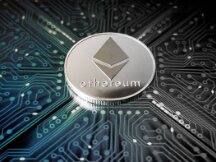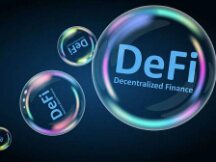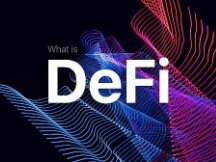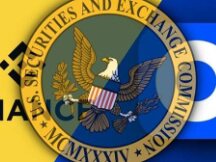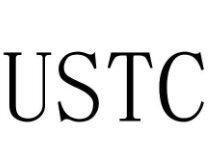Can Polkadot DeFi Acala Platform Succeed After Moonbeam?
Project description
A few days ago, Moonbeam (GLMR) started to be completed with great success and some dedicated users also benefited. Users who can get rich benefits not only have a good vision, but also have a solid foundation and a full understanding of the project. There are still a few important projects to complete this month. This month, Acala will announce the exchange. Let's first familiarize ourselves with the basics of the project, and finally introduce some dimensions of implementation.
Acala is a one-stop-shop DeFi platform built on a substrate framework, based on Polkadot, with an Ethereum-compatible growth environment, and providing users with a set of financial elements such as trading, lending and releasing cash. The Acala network is a scalable, interoperable, secure and customizable DeFi network.
capital office
Currently, Acala is funded by the Web3 Foundation and has received investments from several world-renowned companies, including Polychain, Pantera, ParaFi, Hypersphere, Digital Currency Group, CoinFund, 1confirmation, HashKey, Coinbase Ventures, etc.
On April 2 last year, Coinbase Ventures, the distributor of Coinbase, announced that it would support Acala/Karura to jointly develop the eco-friendly one-stop-shop DeFi site Polkadot/Kusama. Coinbase Ventures' support for the Acala Group will help Acala/Karura secure their top spot on Polkadot/Kusama.

According to Acala's announcement, the seeds will be available on March 27, 2020 with revenues of $1.5 million, with Polychain as the leader in investments and investments such as Hashish and KR1 participating in investments. On August 27, 2020, led by Pantera Capital, Round A funds will be raised by the decision of $7 million, 1confirmation, DCG and Arrington XRP Capital. The total revenue in both cases was $8.5 million. On September 8 last year, Acala announced that it had raised $61 million from more than 2,600 investors worldwide, which would be donated by the Acala Foundation to the Acala Treasure chains.
team information
Acala was started mainly by the Laminar and Polkawallet groups, the financial management process, and now has 17 registered members on its official website.

Ruitao Su is the founder of Acala and the current CEO of Laminar Protocol. Prior to that, he was CTO of Centrality. Su is an award-winning software engineer, entrepreneur, investor, advisor to technology companies and startups.
Bryan Chen is another co-founder of Acala Network. He is also co-founder and CTO of Laminar. Chen is a major sponsor of the Substrate codebase and Polkadot's ambassador.

Bette Chen is the Founder of Acala Network and Chief Operating Officer of Laminar. He is a product and marketing leader. Chen holds a bachelor's degree in software engineering and business administration (MBA). He has 10 years of experience in managing software and high-tech products.
application scenario
EVM-enabled DeFi platform
Acala is a layer 1 blockchain platform designed and built for financial events. Developers can create various DeFi applications from Acala. At the same time, Acala is compatible with Ethereum Virtual Machine (EVM), so it is very easy to export operations from Ethereum, BSC and other ecosystems to Acala.
stabilitécoin USD
Acala USD (aUSD) is a stablecoin backed by various crypto assets, the value of which is pegged to the US dollar. Users can send and receive USD through the chain of all blockchains connected to Polkadot.
Apple L-DOT Product Launch
In PoS chains like Polkadot, token holders can benefit from security while maintaining network security, but the potential is limited because staking tools don't transition to close time and no time. -closing
acaladex
Acala has established in Acala DeX, a trading platform that uses the Automated Market Maker (AMM) mechanism for decentralized token exchanges, and trading partners use USD as their currency.
SWF Decentralized Sovereign Wealth Fund
Decentralized Sovereign Wealth Wealth (dSWF) is Acala's innovative form of on-chain fund management. Just as some countries have government-sponsored exchange regulation agreements in place, Acala uses dSWF to manage its network assets to achieve growth.
Symbolic economy
Jeton: ACA
Total : 1 milliard
Reimbursement rate: 18.33%
Sponsors: 11.66%
Team: 20.25%
Auction Result: 34%
Green Development Fund: 5%
Reserve fund: 10.76%

ACA pricing model
Second market price on the ACA list ≈ If the DOT price is locked on the Acala network (Deposit × today's price), 32,515,989 DOT are closed and the current DOT price is $26.78, then the net worth of the ACA is $870.6 million, and unity. the cost of the ACA is based on the circulation of the date of registration; Suitable for GLMR but not for CLV Reasons to be associated with major green and DOT registrations after CLV Go online;
Costs included in the slot machine auction
According to official data, a total of 4.61 ACAs are awarded to a DOT, and according to the Gambling Challenge (202.11.04), the contract is lost from the DOT until the day the ACA goes live. . Currently the DOT cost, ACA cost is about 5.68 US dollars.
Last year, the IC0 price was $0.67 and the offer price was $1.5. Return costs are calculated based on the price displayed online, and the cost information displayed online is not published.
Comparison with Moonbeam of Polkadot Parachain TOP1
ACA has 32.51 million DOTs registered by 81,000 users. GLMR has 35 million DOTs registered by 200,000 users.
Moonbeam's strength depends on the number of people and variety, and it also has better quality. The market value of its sister network, Karura, is 0.74. You can still see some differences between Acala and Moonbeam, but Acala is also one of the most important activities in the Polkadot ecosystem. ~

Scan QR code with WeChat
